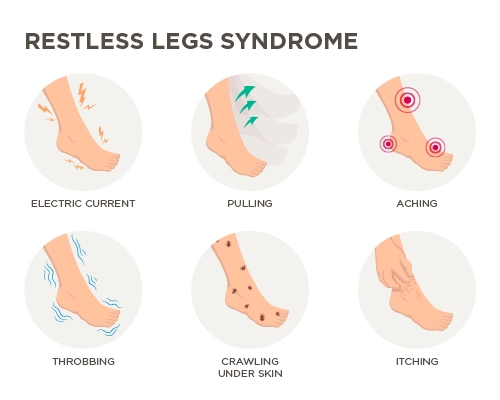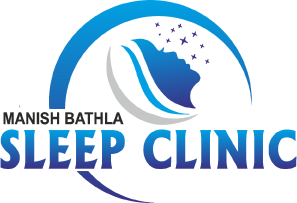
What is Restless Leg Syndrome?
Restless Leg Syndrome (RLS) is a neurological disorder characterized by uncomfortable sensations in the legs, typically occurring in the evening or at night, leading to an irresistible urge to move the legs.
Symptoms:
- Uncomfortable sensations: tingling, burning, itching, or cramping
- Urge to move legs, often accompanied by:
– Restlessness
– Fidgeting
– Tossing and turning
– Getting up to pace or walk - Symptoms worsen in the:
– Evening
– Night
– Periods of inactivity (e.g., sitting, traveling) - Relief with movement, but symptoms return when activity stops
Types:
- Primary RLS: No identifiable cause, often familial
- Secondary RLS: Associated with underlying medical conditions (e.g., diabetes, kidney disease)
- Idiopathic RLS: No known cause, but not familial
Causes and Risk Factors:
- Genetics
- Iron deficiency
- Kidney disease
- Diabetes
- Peripheral neuropathy
- Medications (e.g., antidepressants, antihistamines)
- Pregnancy
- Vitamin deficiencies (e.g., B12, folate)
- Sleep disorders (e.g., sleep apnea)
Consequences:
- Sleep disturbances
- Fatigue
- Daytime fatigue
- Mood disturbances (depression, anxiety)
- Impaired daily functioning
- Reduced quality of life
Diagnosis:
- Clinical evaluation
- Medical history
- Physical examination
- Laboratory tests (e.g., iron levels, kidney function)
- Diagnostic criteria (ICSD-3 or DSM-5)
Treatment Options:
- 1. Lifestyle modifications:
– Regular exercise
– Relaxation techniques
– Sleep hygiene practices
– Avoiding triggers (e.g., caffeine, nicotine) - Medications:
– Dopaminergic agents (e.g., ropinirole)
– Opioids (e.g., tramadol)
– Benzodiazepines (e.g., clonazepam)
– Anticonvulsants (e.g., gabapentin) - Alternative therapies:
– Massage
– Acupuncture
– Physical therapy
